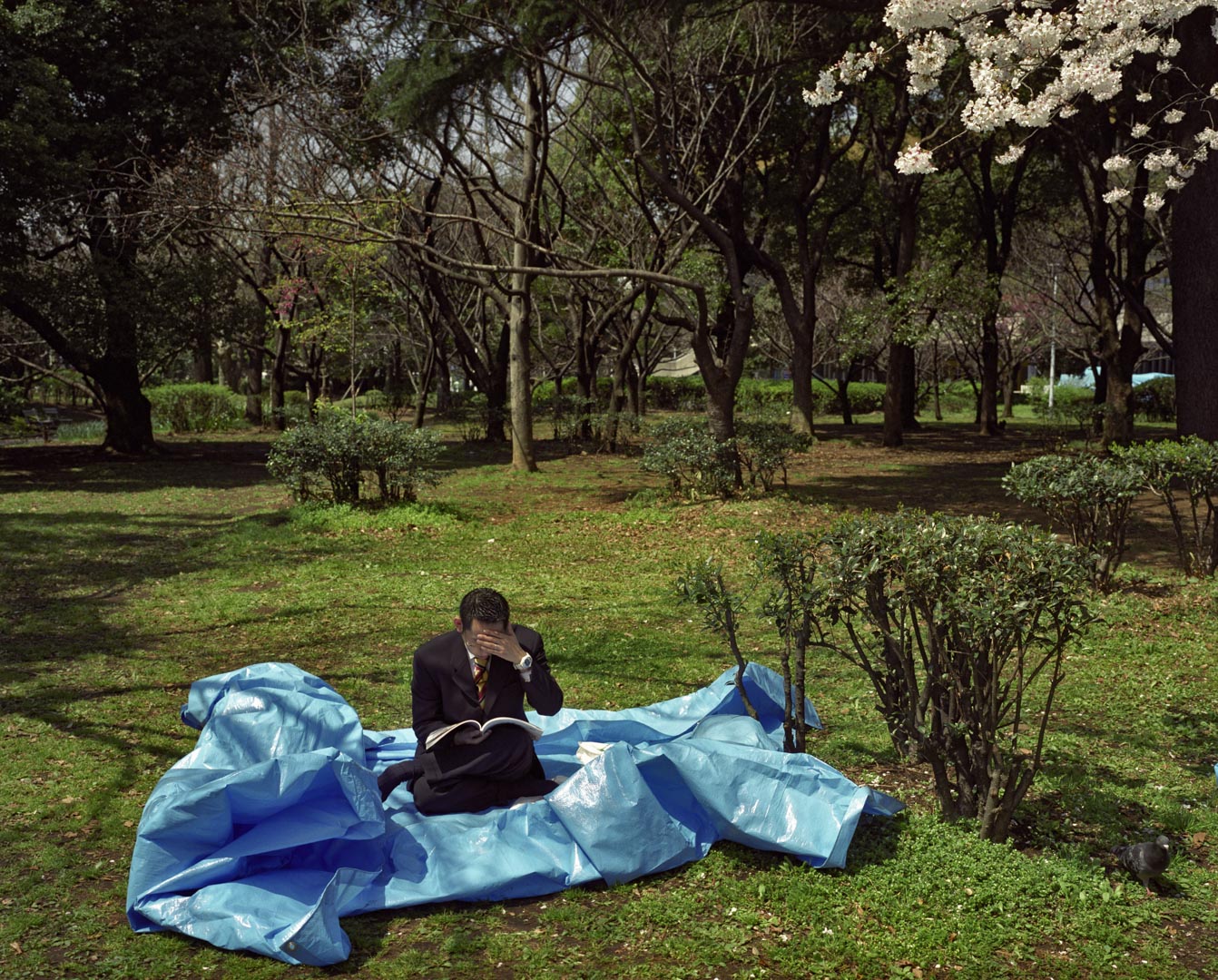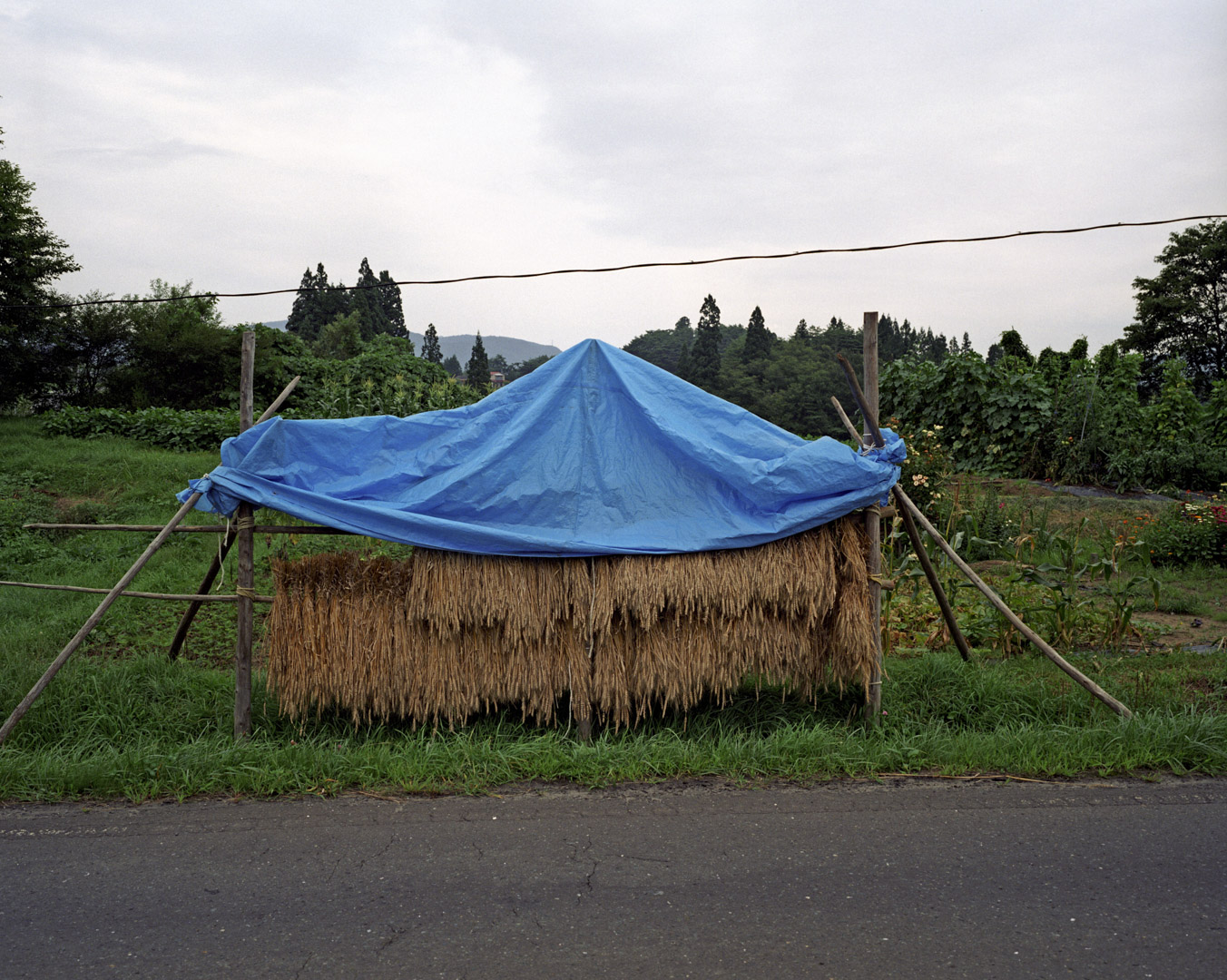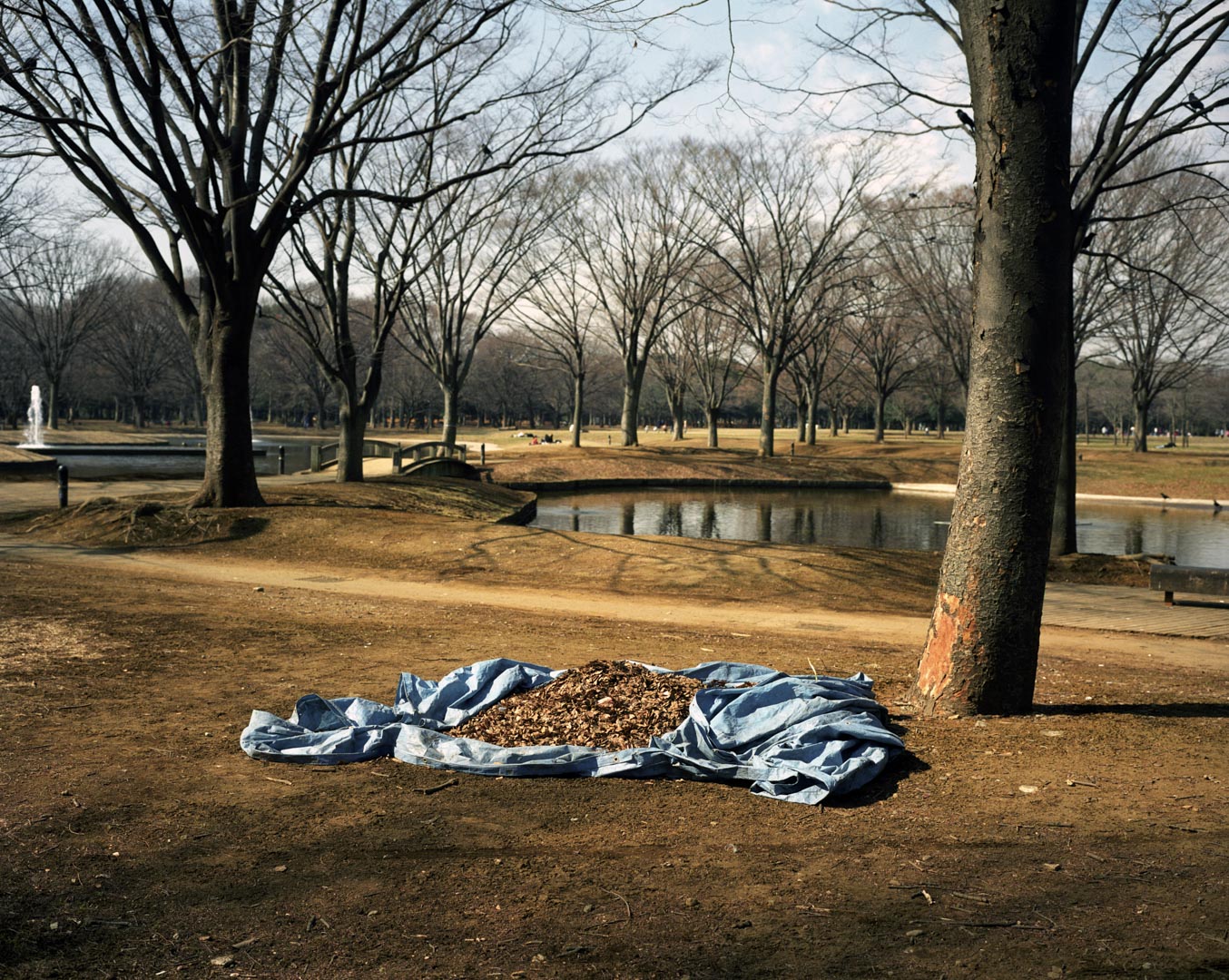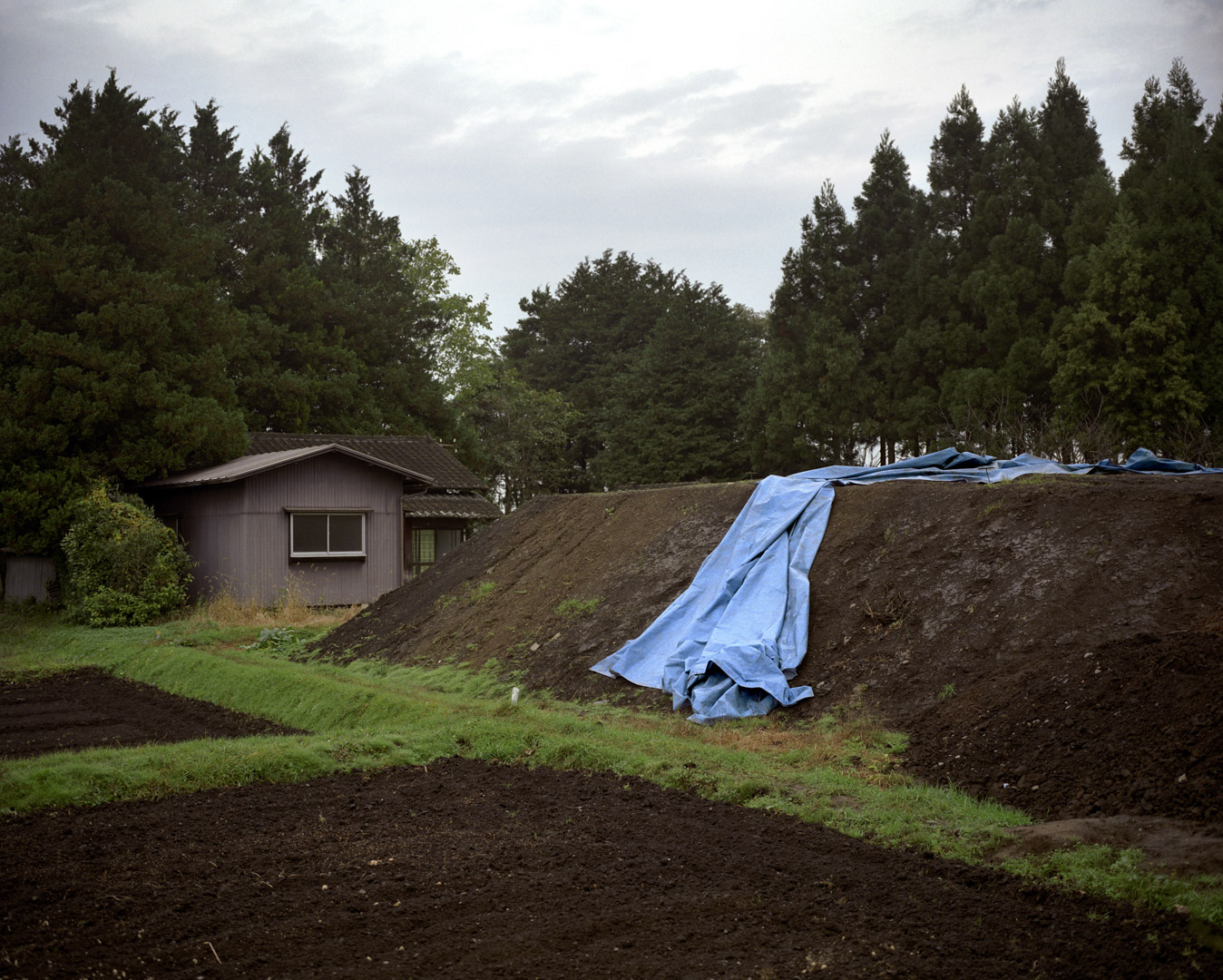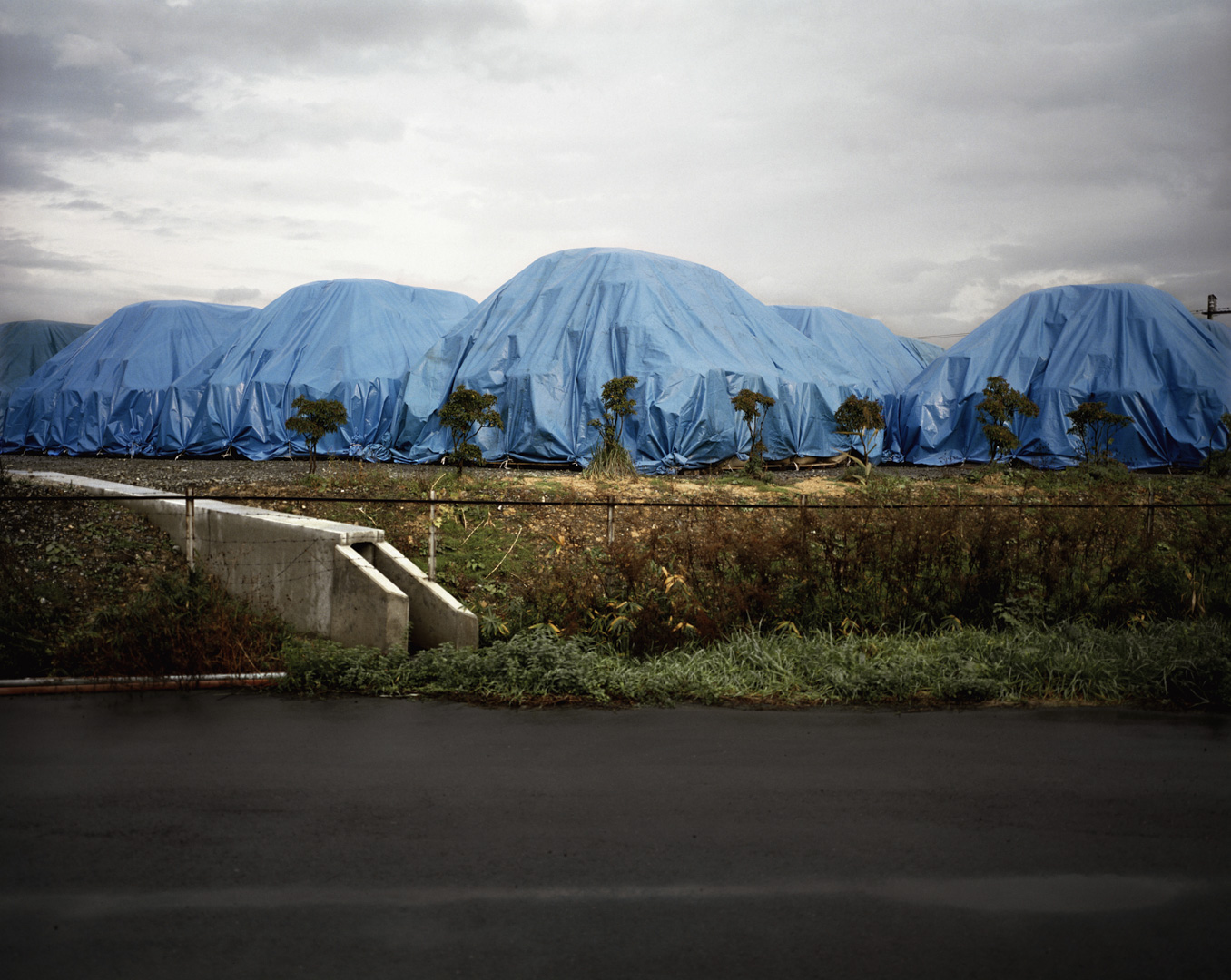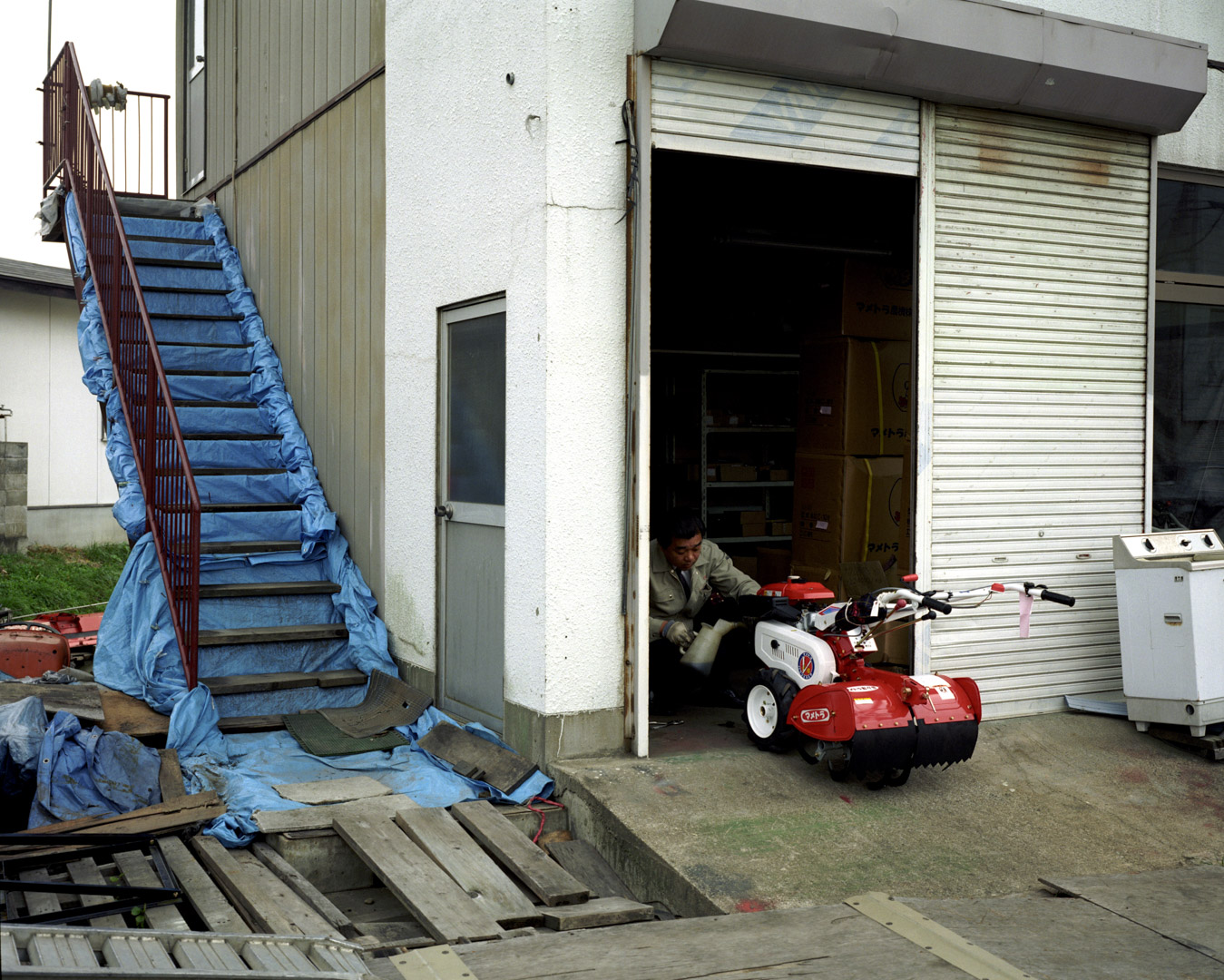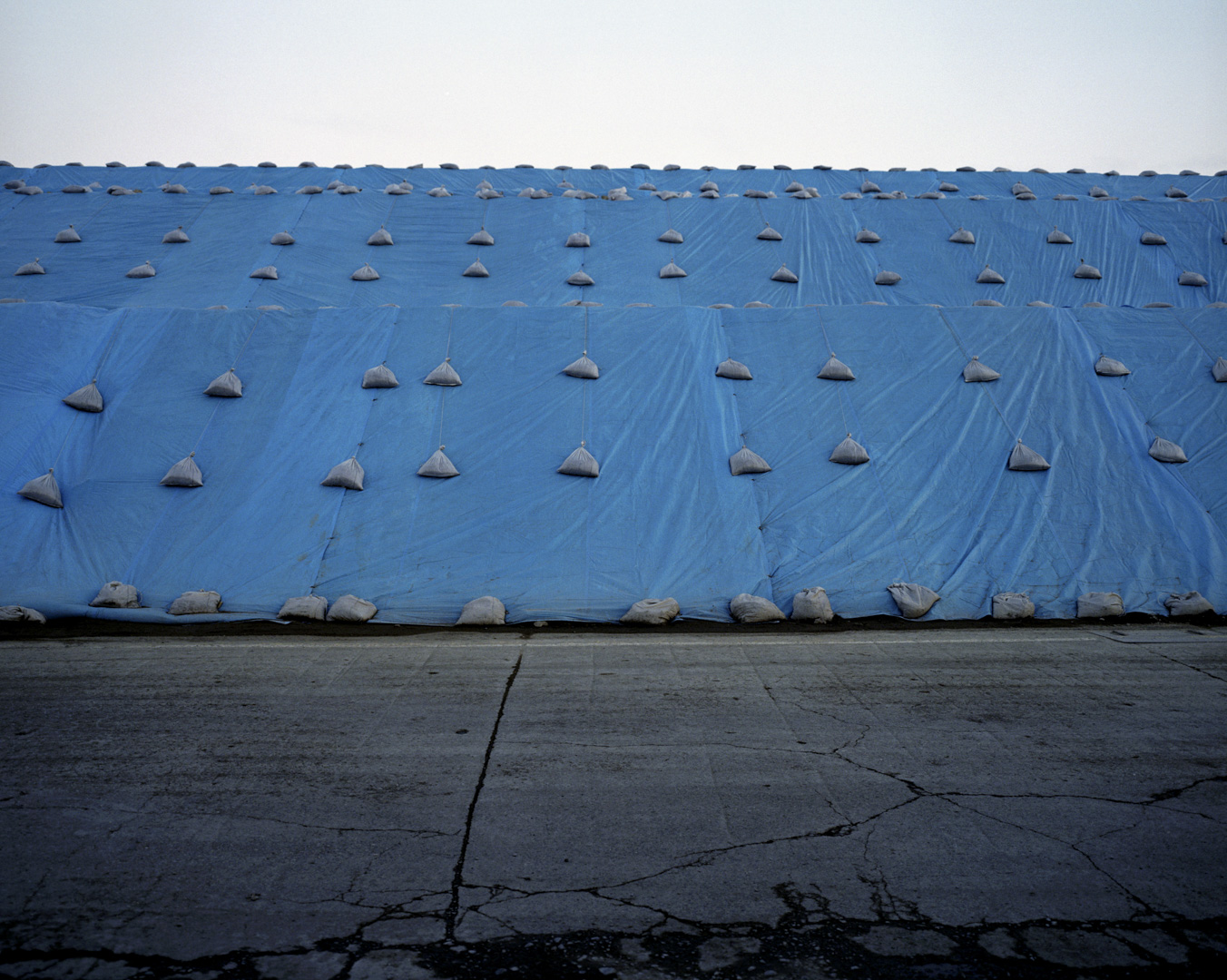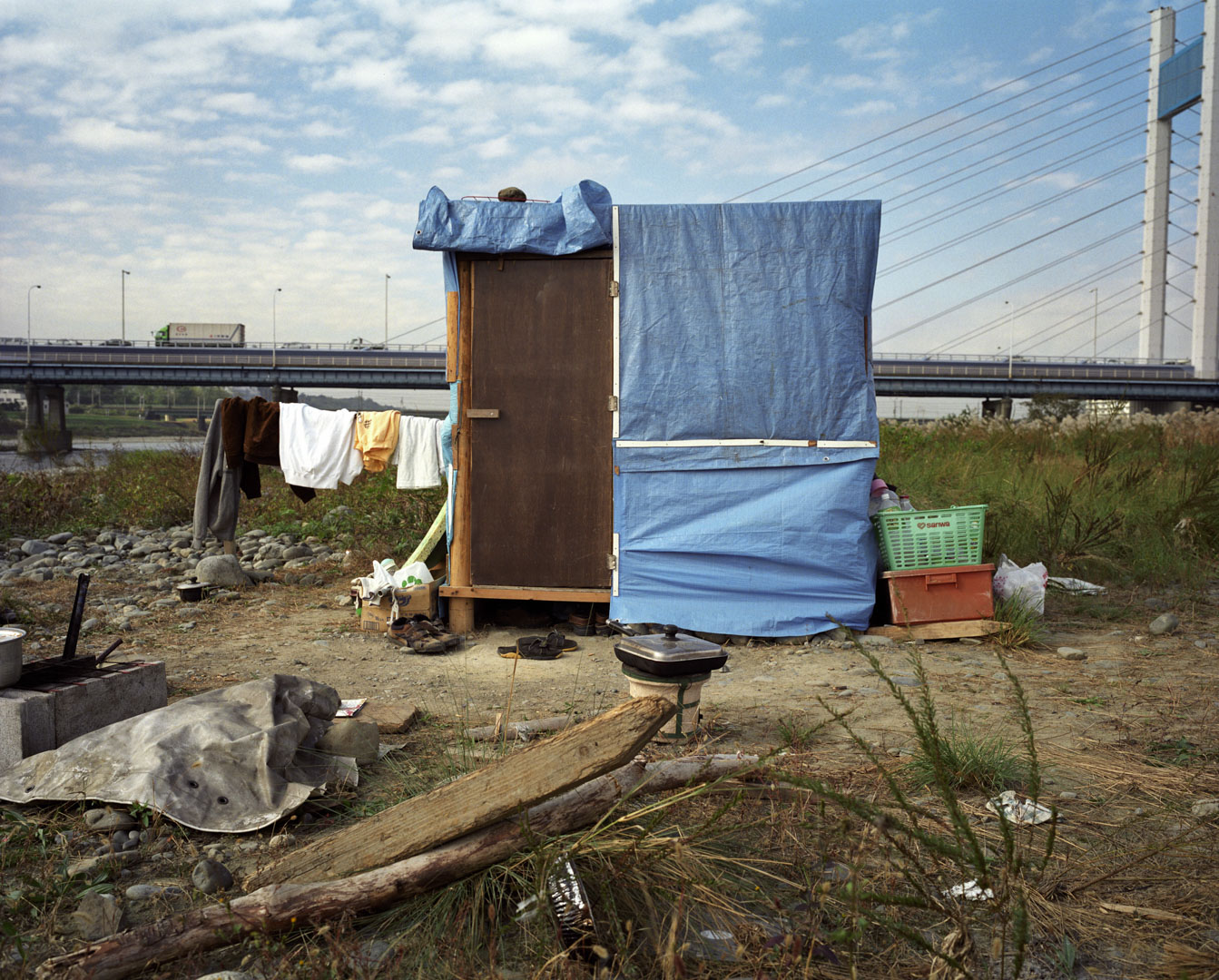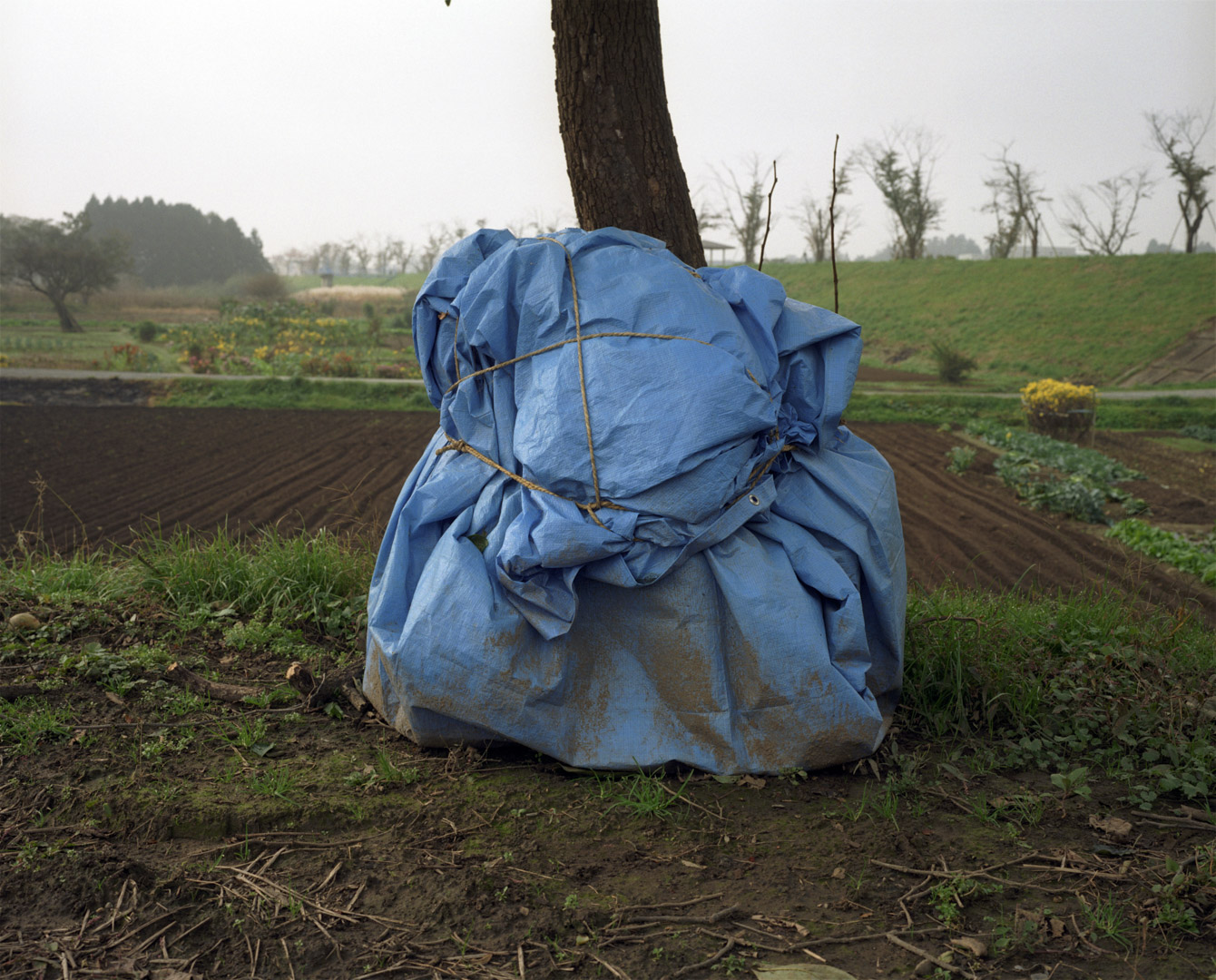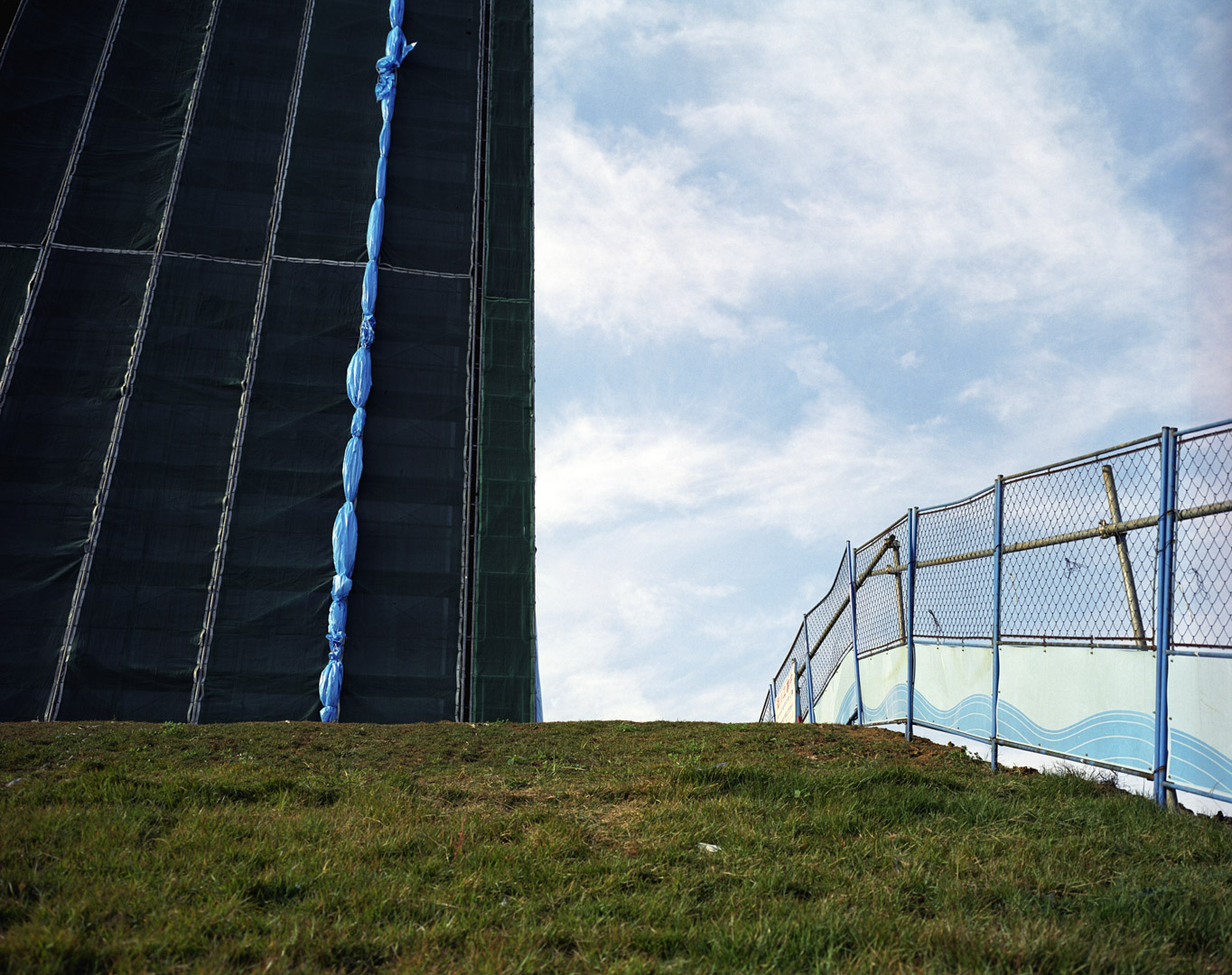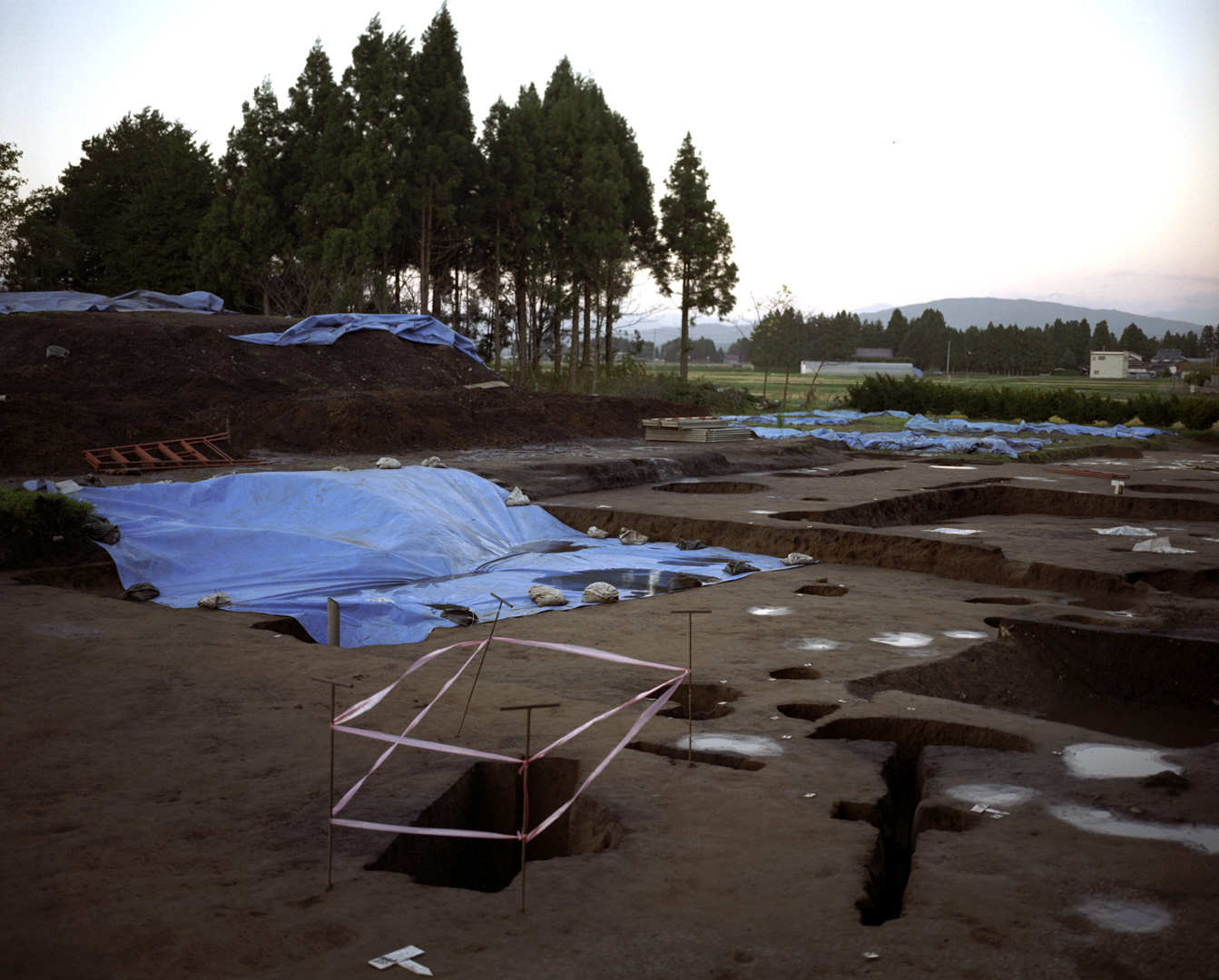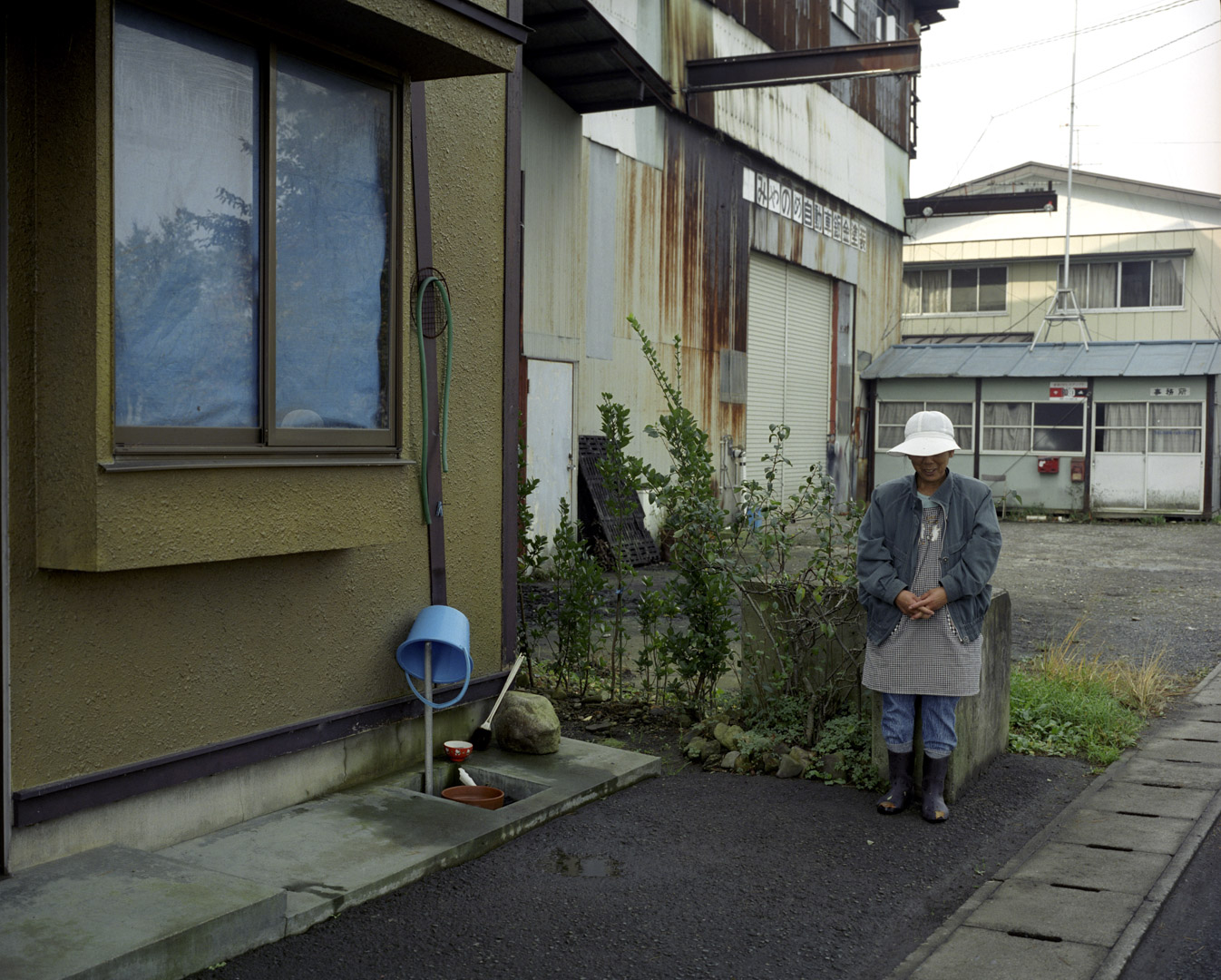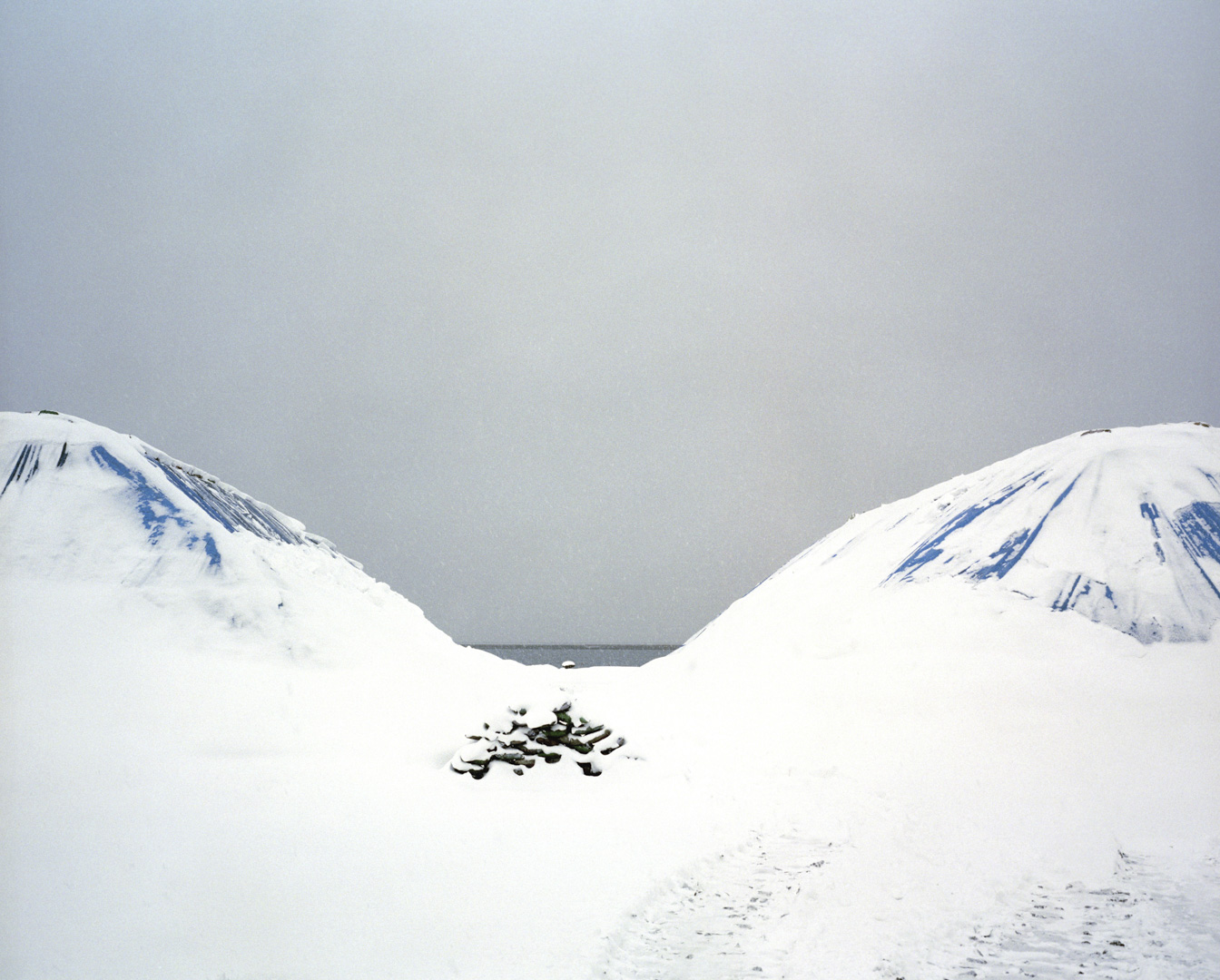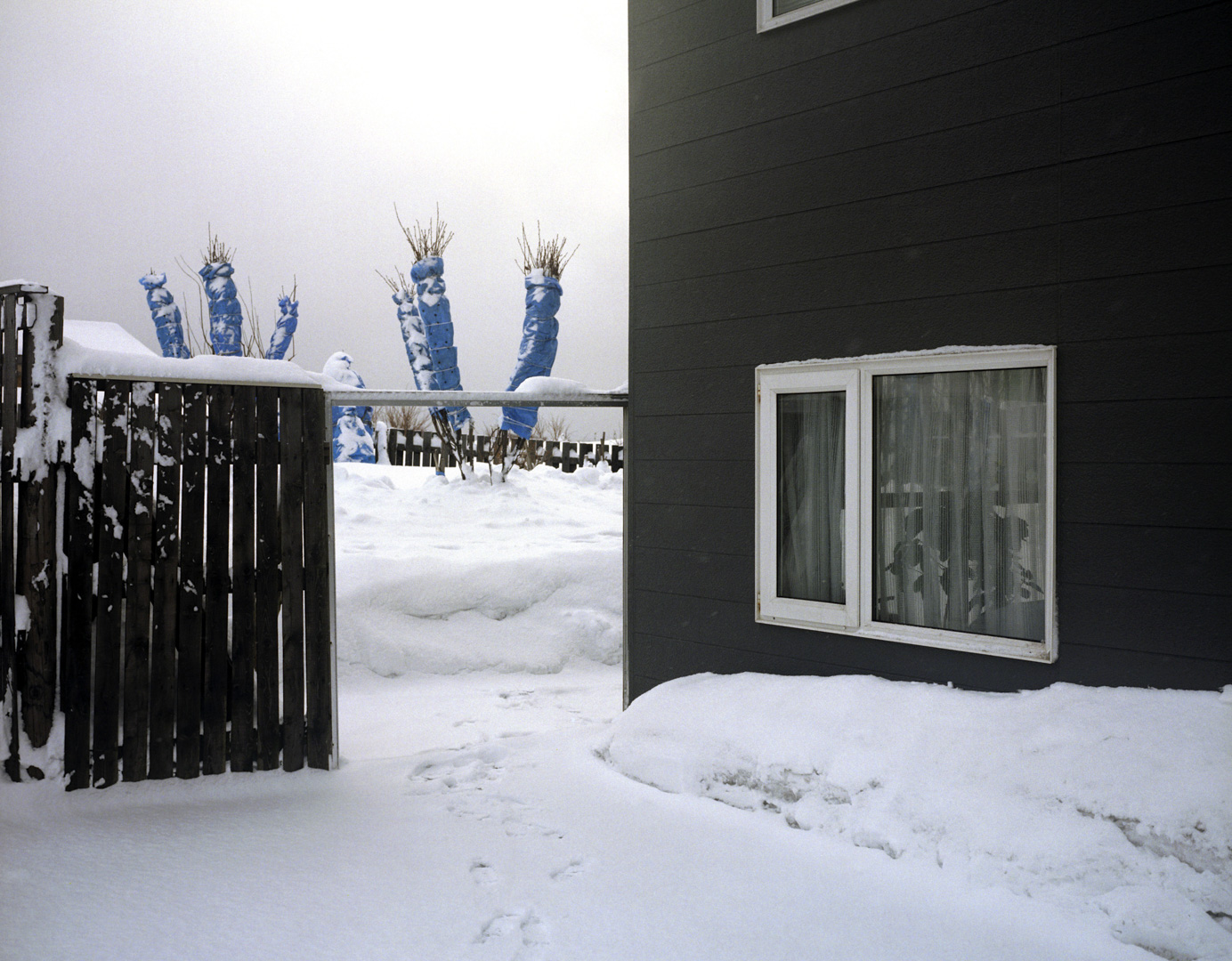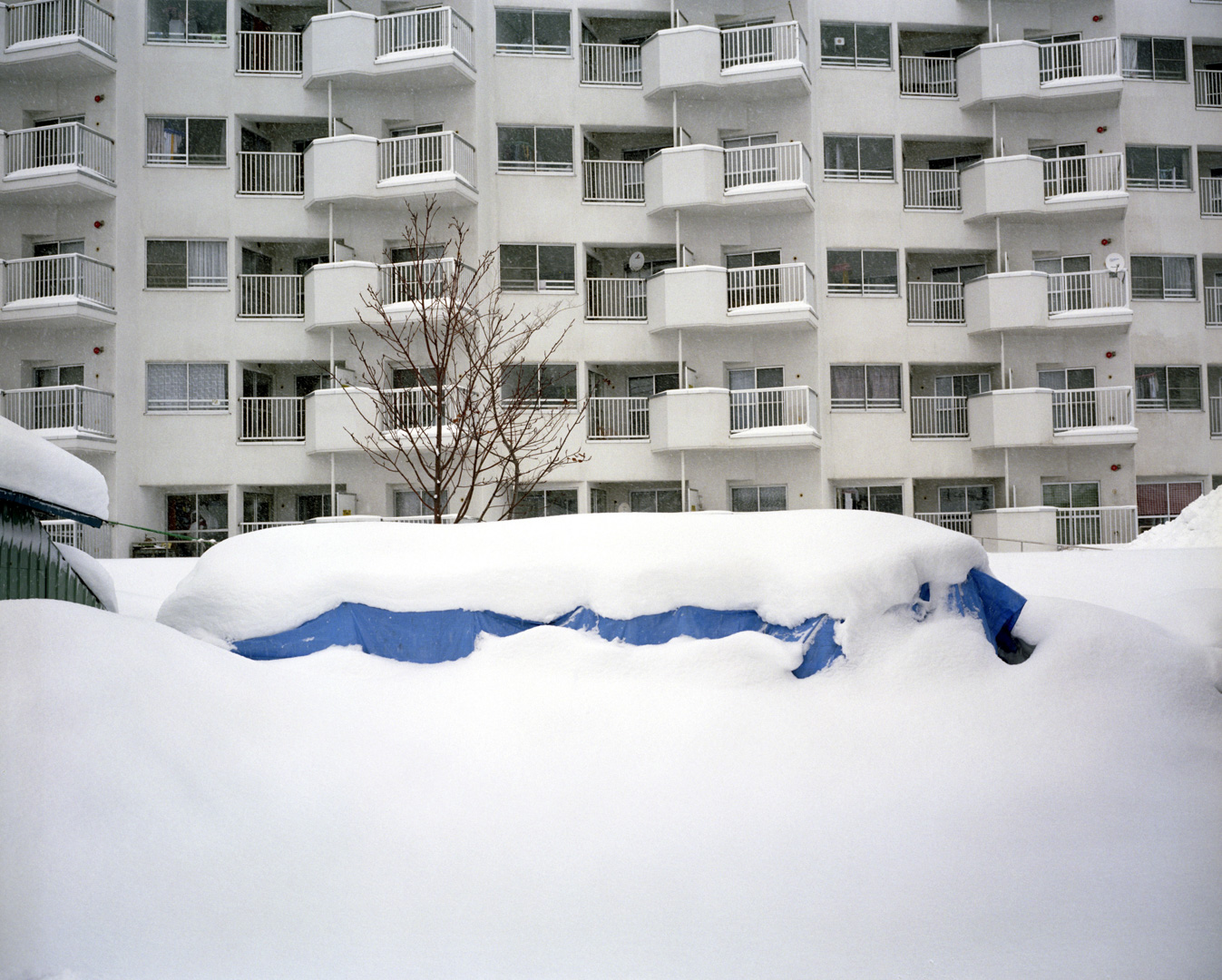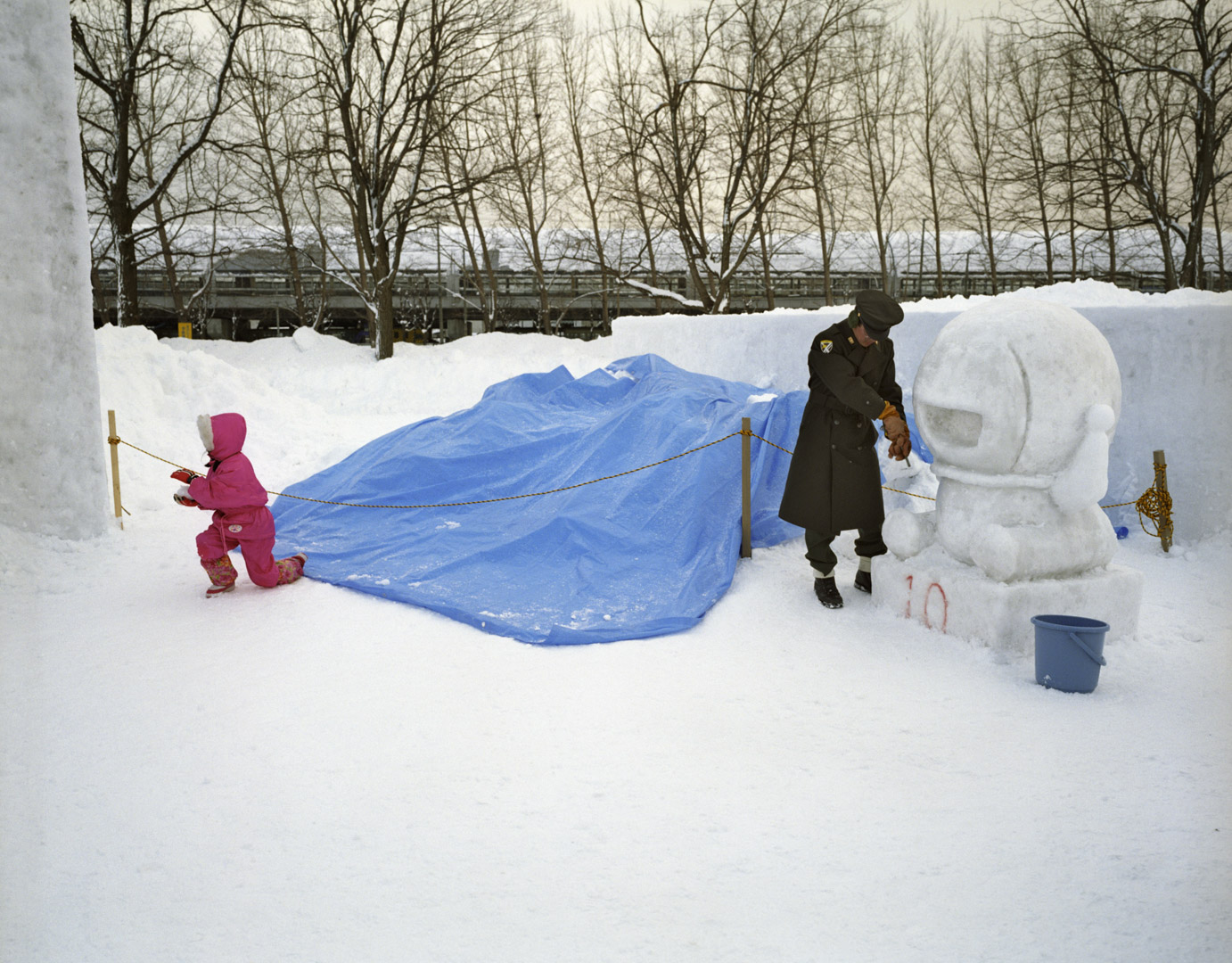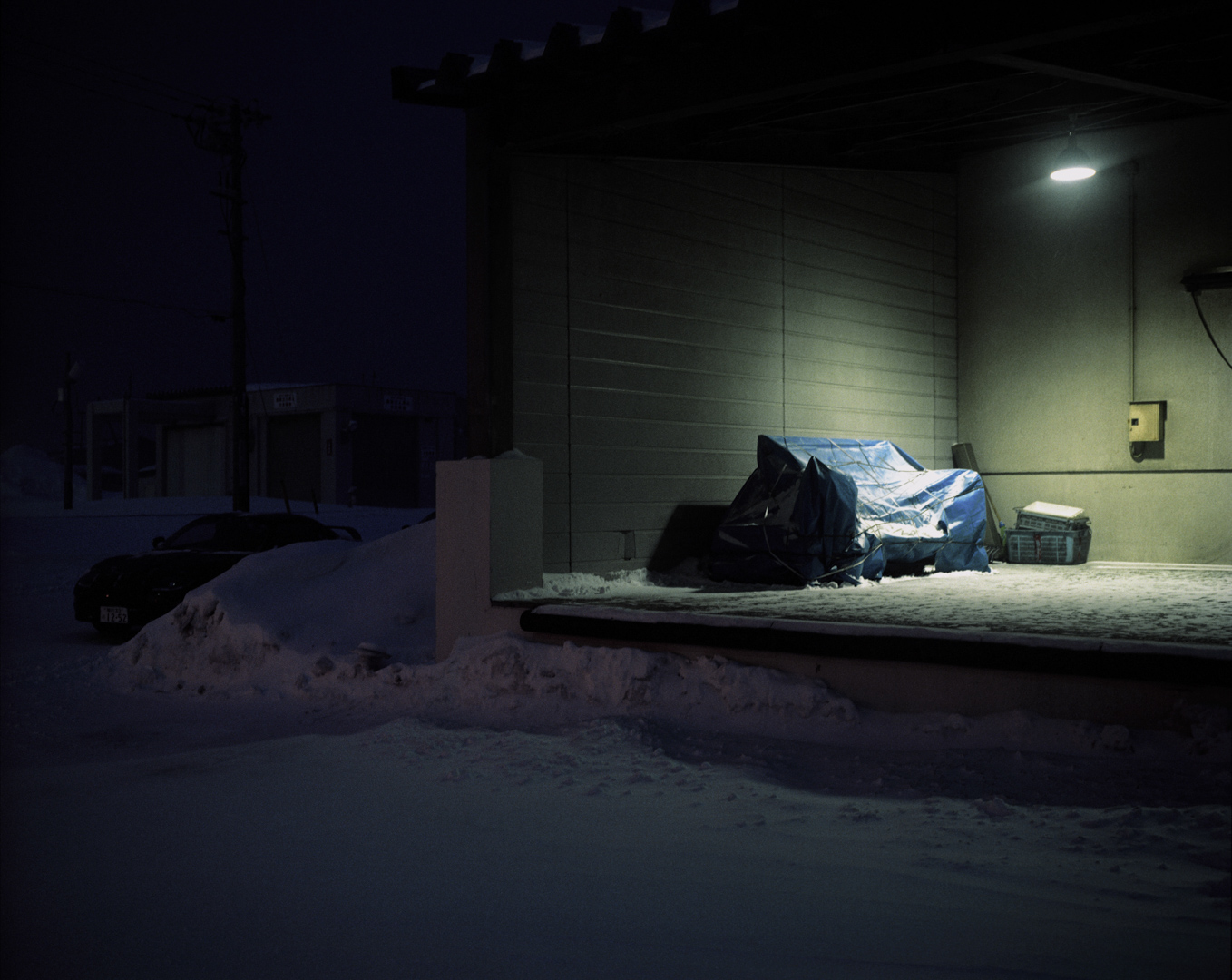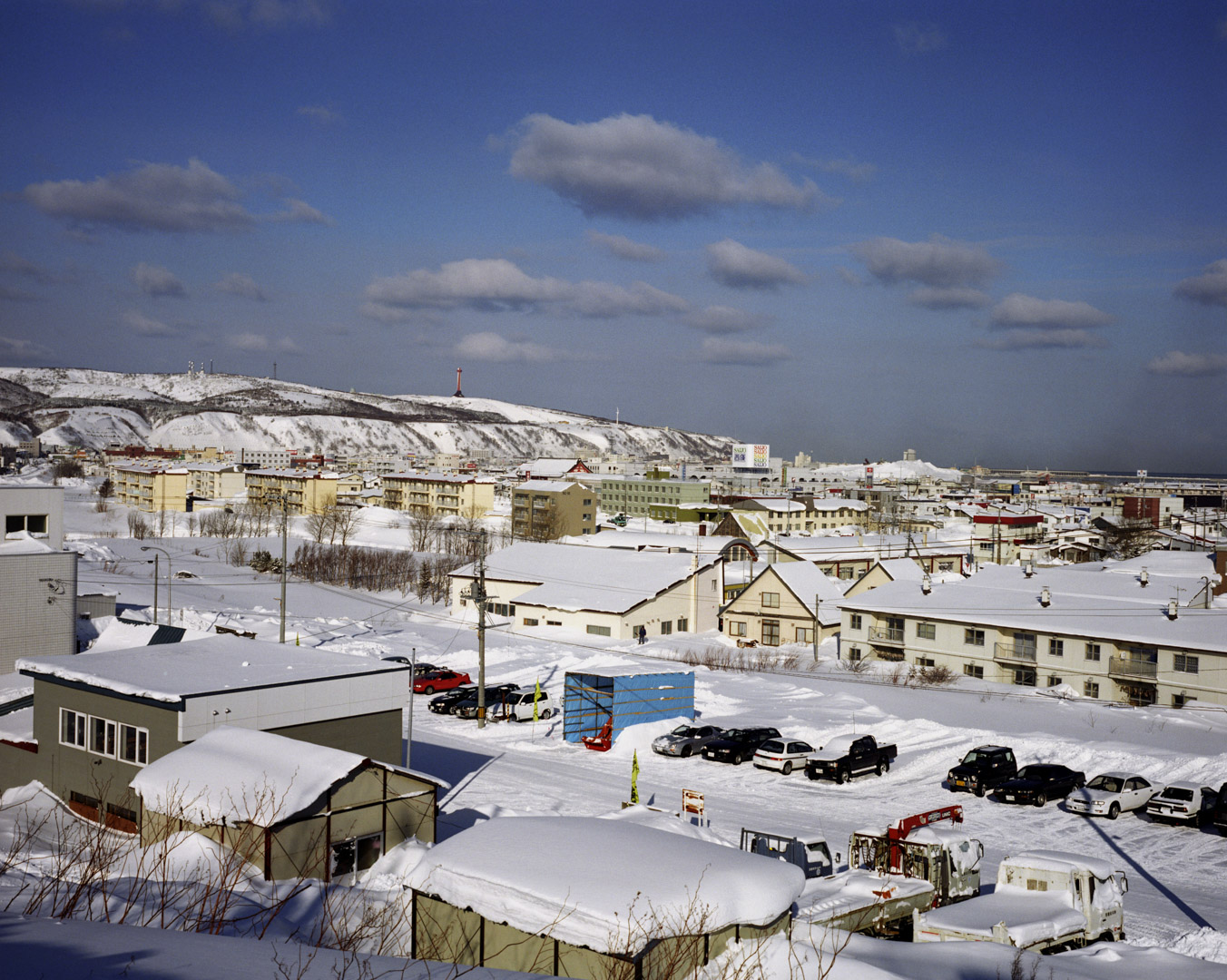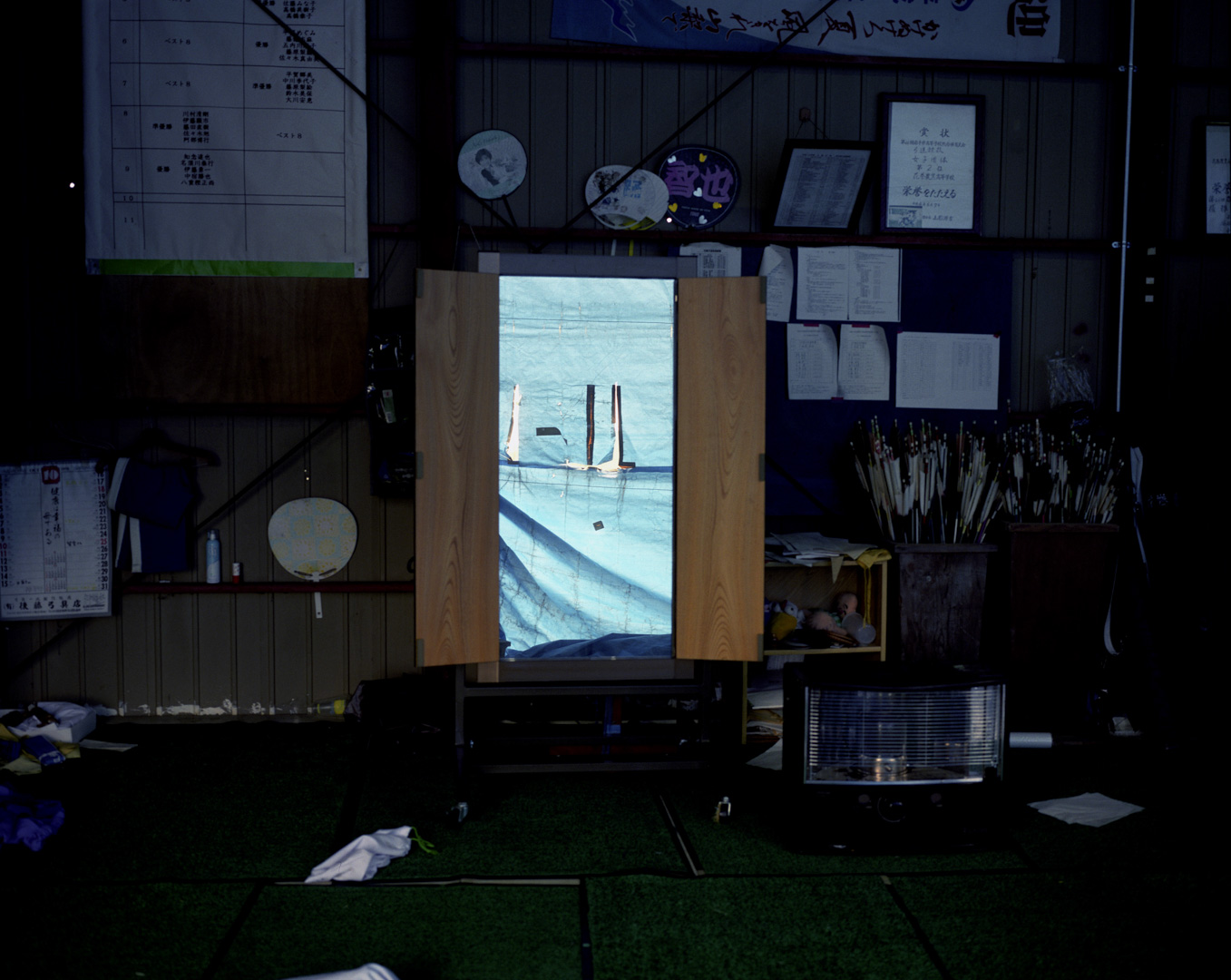Aoba the Blue Leaf, 1999
Ephemeral tatami on park lawns in spring, summer umbrella for cereals in search of freshness, autumn screen, cozy winter coat for bare trees …
Nailed, roped, lashed, floated or glued, anywhere, in the city or in the country, its beautiful azure color enamels the landscape of the Japanese archipelago. The Japanese call it “Ao Ba, the blue leaf”. A very nice name for a simple tarpaulin, a plastic square manufactured in series which has the modest but very useful function of protecting and isolating surfaces and objects in a country where typhoons and earthquakes are as frequent as hailstorms.
If there is nothing extraordinary about the fact that peasants, workers, picnickers or Sunday do-it-yourselfers tirelessly fold and unfold its impermeable surface according to the seasons and the work, on the other hand, the result of these manipulations is most astonishing. Where others would have been content, for example, with quick devices to cover a building site or a haystack, the Japanese display impressive application and zeal, witnessing a permanent concern for harmony with the environment and, more broadly, an art of living that continually seeks in the accomplishment of something banal in itself, such as preparing and drinking tea, a high moral sense.
